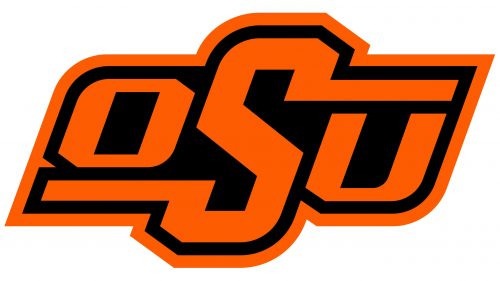 Oklahoma State University Logo PNG
Oklahoma State University Logo PNG
The Oklahoma State University logo conveys power and strength, combining tradition and modernity. The emblem stands out with a unique style that distinguishes the university from other educational institutions. Contrary to conventional academic standards, this logo creates the image of a dynamic and modern university focused on youth and innovation, highlighting its ability to keep pace with the times despite its over 130-year history.
Oklahoma State University: Brand overview
The Morrill Land-Grant Acts established universities in each state to educate mechanical arts and agriculture and marked the beginning of Oklahoma State University’s (OSU) history in 1890.
Territorial Governor George W. Steele signed the legislation creating the Oklahoma Agricultural and Mechanical College (OAMC) on December 24, 1890. The college’s original location—Stillwater—is still its current address.
The first courses were taught at the new institution on December 14, 1891. During the school’s inaugural year of operation, five staff members and just 45 students enrolled. Robert J. Barker served as the college’s first president.
The college had a rough time in its early years due to various issues, such as inadequate infrastructure and funding. Despite this, the establishment rose to prominence very quickly as a regional hub for agricultural research and teaching.
The inaugural graduation ceremony was held in 1894 when six students were awarded diplomas. This occasion was a significant turning point in the college’s development as a recognized institution of higher learning.
The early 20th century experienced substantial expansion for the college. With the founding of the School of Engineering in 1908, the academic offerings were broadened beyond agriculture.
The years 1910–1920 saw tremendous expansion. Academic programs increased, and new facilities were built. In 1924, the North Central Association of Colleges and Schools accredited the college, attesting to the high caliber of its instruction.
The institution suffered greatly during the Great Depression of the 1930s, but it survived thanks to strong leadership and government assistance.
World War II brought many changes. Numerous instructors and students served in the armed forces, and the college took part in several military training initiatives. Thanks to the G.I. Bill, the institution saw a notable increase in student enrollment following the war.
An important development in the university’s history occurred in 1957 when OAMC changed its name to Oklahoma State University (OSU). This modification accounted for the university’s growing research and educational initiatives.
The institution experienced substantial growth in the 1960s and 1970s. In 1972, new academic programs and faculties, including the College of Osteopathic Medicine, were founded.
The university maintained and strengthened its standing as a preeminent research institution during the 1980s and 1990s. The Center for Health Sciences in Tulsa is one of the new research institutions and centers that have been established.
During the 2000s, the school made considerable capital expenditures on its infrastructure, including new academic buildings, residence halls, and sports facilities.
The university commemorated its 120th anniversary in 2010, solidifying its place among the top institutions in the area. At this point, the establishment offered a wide selection of undergraduate, graduate, and doctorate programs and had several campuses around the state.
“Branding Success,” an ambitious fundraising effort initiated in 2011, aimed to raise $1 billion. This program successfully concluded in 2014, surpassing its original objective.
The Spears School of Business opened a new facility in 2012, greatly enhancing the living and learning environments of management and business students.
In 2013, the institution launched new online courses and degrees to expand its offerings and increase accessibility for non-traditional students.
Large-scale investments in research infrastructure were made in 2014. The university’s standing in medical research was reinforced with the opening of the new Tandy Medical Academic Building in Tulsa.
The school commemorated its 125th anniversary in 2016 with various programs honoring the institution’s illustrious past.
On the Stillwater campus, a new student union opened its doors in 2017 and quickly became the hub of student life and activities.
In 2018, the university introduced “OSU 2.0,” a new strategic program to raise the caliber of research and instruction even further.
In 2019, the number of engineering and technology programs offered significantly increased, and the brand-new ENDEAVOR Center for Applied Research was launched.
Despite obstacles worldwide in 2020, the institution kept growing, greatly increasing its online offerings and modifying its curricula to reflect the times.
In 2021, a fresh push to promote diversity and inclusion on campus, including developing new scholarship programs for disadvantaged student groups, was introduced.
The school plans to establish a new Center for Advanced Manufacturing and Aerospace Technology in 2022, which is anticipated to improve the institution’s standing in these domains.
The university has produced numerous exceptional alumni, including well-known corporate executives, sports figures, scientists, and politicians. The school is also renowned for its sports departments, particularly for American football and basketball.
Meaning and History
What is Oklahoma State University?
This is a renowned public research-granting university in Stillwater, Oklahoma. It is known for its extensive academic offerings, providing undergraduate and graduate degrees in various fields, including business, engineering, science, agriculture, and the arts. The university is also known for its emphasis on research, especially in engineering, veterinary medicine, and agriculture. Modern and historic buildings coexist on the campus, with cutting-edge facilities that support the university’s teaching and research initiatives. The school is known for its active student body, extensive traditions, and competitive athletics, especially soccer and wrestling. With a diverse student body and an emphasis on experiential learning, the University offers its graduates a well-rounded education that can ensure their success in their chosen industries.
Before 2019
The logo features a harmonious combination of colors and fonts, giving it expressiveness and memorability. The large letter “O” is the central element, visually demonstrating the volume and a complex faceted structure. Being the first in the university’s name, this letter symbolizes the careful refinement of students’ knowledge and skills. The corners of the letter are partially rounded, creating a balance between tradition and modernity.
The university’s full name is at the center of the logo on a black background. The word “State” is highlighted in the same style and color as the letter “O,” forming a visual connection with the informal name “Oklahoma State.” The name of the state and the word “university” are written in small white font, placing the primary focus on the key elements of the logo.
A gray border around the outer edge emphasizes the black background and the outline of the letter “O,” creating a unified image. The logo’s metallic and dark tones highlight the university’s historical connection to agriculture and mechanization, recalling its original foundation as an agricultural and mechanical college. The rugged design also refers to cowboy culture, an important part of the state’s heritage.
2019 – today
2019, the OSU logo was updated to maintain its powerful sports style and reflect the institution’s spirit and energy. The logo’s foundation is orange, traditionally associated with the university, symbolizing energy, activity, and passion. A black base contrasts the orange background and highlights the main element—three capital letters, OSU.
The abbreviation OSU, the university’s informal name, emphasizes simplicity and accessibility. Modern students appreciate brevity and directness, making the emblem relevant and easy to remember. The letter “S” in the center stands out with elongated glyphs, symbolizing dynamism and continuous forward movement. This element can be interpreted as steps, representing the growth of knowledge and progress students achieve during their studies at the university.
Despite its simple forms, the emblem carries a deep meaning, reflecting Oklahoma State University’s values and modern approach to education.
The Seal
Like many other university symbols, the Oklahoma State University seal includes the institution’s name and founding year on the outer rim. The university was founded in 1890 under the name Oklahoma Agricultural and Mechanical College, reflecting its agricultural and mechanical roots. It eventually developed into a major university.
The central element of the seal is the image of the sun, behind which is a triangle with a lamp in the middle, known as the “Radiant Delta.” This image represents the Masonic symbol of the all-seeing eye, indicating God as the source of knowledge and truth. The triangle symbolizes the Trinity and the three aspects of a person in Christian teaching: spirit, soul, and body.
The lamp in the center of the triangle symbolizes the immortal soul and the flame of truth, which should burn in the students’ hearts. Along the edges of the triangle is the university’s motto: Scholarship, Instruction, Service, reflecting the institution’s core educational mission—scholarships, teaching, and community service. This symbolism emphasizes the importance of balancing academic knowledge, spiritual growth, and practical activity in the lives of students and faculty.






